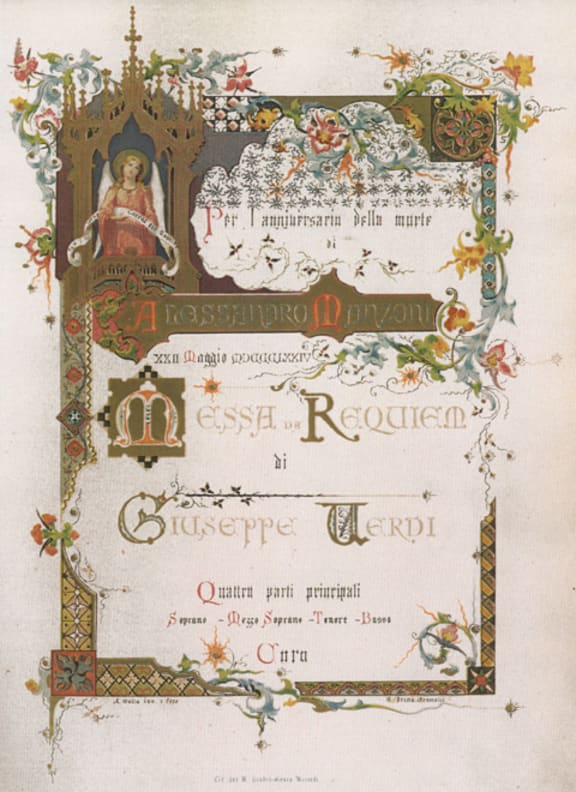
Title page of first edition of Verdi Requiem Photo: Ricordi, Public Domain
Giuseppe Verdi was at the height of his powers as an operatic composer when he wrote his Requiem.
Each of the 18 sections of the work is highly individual, unforgettable and filled with immediately appealing melodies.
Verdi believed that after a death, condolences only cause additional pain to the survivors. It was his custom to avoid the public funeral of people he loved; he would visit the grave later and as quietly as possible.
He said, “I believe that silence is the only comfort for great sorrows.”
And so the opening of this Requiem grows timidly, out of silence. It is a whisper, a halting murmur, a personal appeal.
But Verdi’s Requiem is also viscerally exciting.
If you are sitting in the concert hall when the orchestra launches into the Dies Irae, you should hear the music through your entire body and feel the bass drum pounding through your stomach.
When he wrote this Requiem, in 1873, Verdi was reaching a peak in his career. He had already created a body of operas that were successful on the whole.
But from this point on, his leading place in Italian music was assured.
The recently completed Aïda and this Requiem became immediately popular, and remained in high demand throughout Europe and America.

